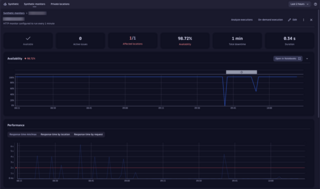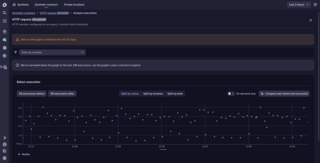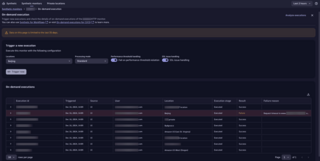The Analyze Executions feature in HTTP Monitors provides insights into execution results using a scatter plot chart. It allows users to navigate through executions and analyze them based on different dimensions.
Key Features:
- Execution Selection: Users can move the view window to the next or previous 50 executions, with a maximum of 100 points displayed for readability.
- Filtering & Grouping Options:
- Split by Status: Default view showing Healthy and Failed executions separately. Users can focus on specific statuses using the legend.
- Split by Location: Displays execution results from different locations, with the option to filter specific locations.
- Split by Both: Combines status and location filters for a more detailed breakdown.
If multiple statuses exist for a location, they will be presented separately in the legend (e.g., Las Vegas (Healthy) and Las Vegas (Failed)).


